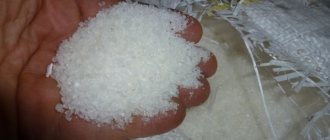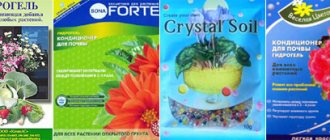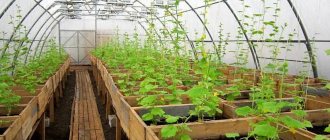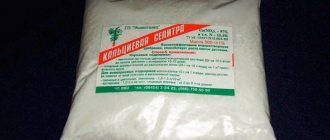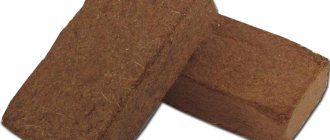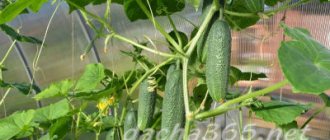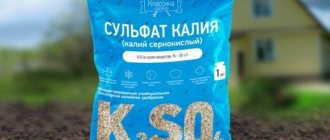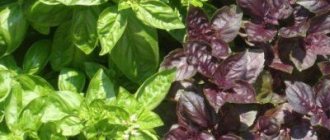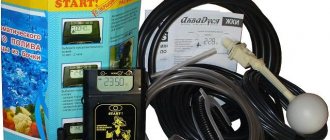The use of hydrogel for plants is very convenient in cases where it is not possible to water them on time. The hydrogel is used not only for open ground plants, but also for any seedlings and indoor floriculture. This material is used for additional moisture and fertilizing of crops. A special polymer allows you to gradually absorb water from it along with fertilizer. The use of this material allows you to significantly save not only time, but also water.
Characteristics of hydrogel for plants
The hydrogel is available in the form of a colorless powder or crystals. Soaked in water, they absorb it, turning into a kind of reservoir of water. If you add hydrogel to the soil, it will swell and begin to supply moisture to the plants. Even after the soil dries out, the reserve reservoir (hydrogel) remains full, and the root system of the plants pumps out as much liquid as it needs.
The chemical formula of the hydrogel is a polymer (cross-linked copolymer) that holds water and fertilizers in solutions in large quantities. The hydrogel has the following absorbing abilities: 1 gram of dry matter absorbs up to 0.3 liters of liquid.
Characteristics and methods of using hydrogel.
Before use, the hydrogel is applied to the soil in places where plant root systems have access to it. It is best to apply a substance that is swollen and saturated with water, but it can also be dry (in this case, after adding the hydrogel, it is necessary to immediately water the soil abundantly).
It takes 2-3 weeks for plant roots to grow through hydrogel capsules . They then absorb water from the capsules without needing frequent watering. If watering is infrequent, the soil between them dries out completely, but this will not harm the root system of the plants. The hydrogel acts as a backup source of moisture that can water plants and prevent them from withering and drying out during severe drought and heat.
Hydrogel granules are saturated not only with plain water, but also with fertilizer solutions. This allows not only to nourish the plants with life-giving moisture in the absence of their owners, but also to receive the necessary minerals and nutrients.
The ability to adsorb moisture adds another useful property to the hydrogel: not all flowers have a positive attitude towards flooding them. And the hydrogel prevents this. The hydrogel absorbs all excess moisture flowing through the drainage holes, after which the plants absorb moisture from it when they need it.
There is a Chinese hydrogel (the so-called “aquasoil”), but this is a completely different material, the polymer nature of which is similar to the hydrogel we are considering:
Agricultural hydrogel is a source of additional moisture for plants, and aqua soil is intended to create a decorative effect.
Advantages
- Using hydrogel when planting seeds, you can get seedlings 7-14 days earlier. At the same time, the crop yield increases significantly.
- By saturating the granules with liquid fertilizer, the plant will be provided with useful minerals for a long time.
- The soil in which the hydrogel is embedded has a loose structure, so the plant’s root system receives enough oxygen.
- The survival rate of seedlings in such soil is ensured up to 95-98%. Ornamental plants do not lose their original appearance until the end of the season.
- Beneficial from an economic point of view: 0.8-1.6 g of the substance is enough for 1 kg of soil.
Areas of application of hydrogel
The use of agricultural hydrogel is convenient for open (OG) and protected soils (pots, containers, cache-pots and other containers). It is often used in indoor floriculture. Hydrogel is an excellent tool for arranging a lawn and alpine slide. Trees, shrubs, and flower beds are planted using hydrogel.
The effect of preserving water in hydrogel capsules is clearly visible when it is added to containers located on balconies and streets. In these cases, the plants are watered no more than 2 times a week, and the flower arrangements remain beautiful and decorative.
Using hydrogel for growing seedlings.
Hydrogel is used for growing seedlings on an industrial scale. The soil with which the seedling containers are filled dries out quickly, and thanks to the hydrogel, the final loss of moisture occurs much later.
An interesting option is to germinate seeds in a hydrogel, the granules of which swell, providing an excellent moisturizing environment that stimulates the development of sprouts.
Analogues of the product
Colored hydrogel is used as decoration. Soft or agricultural gel is necessary for germination, moisture retention of most garden and vegetable crops, as well as in horticulture.
Diluting soil mixtures is not difficult if you follow the instructions. But what to do if there is no substance on sale, and the need to purchase is urgent? The search for similar means remains.
Organic compounds such as coconut shavings, perlite or vermiculite are suitable as moisture retainers. These substances have similar properties, but have additional characteristics. Therefore, before use, it is worth studying their qualities for the plant. Then select the necessary “assistant”.
For which plants can hydrogel be used?
Many gardeners consider hydrogel an excellent method that helps to grow almost any plant, except drought-resistant ones, which include succulents (desert cacti) and epiphytes (orchids, some aroids and other plants), the roots of which do not tolerate the constant presence of wet pieces of gel next to them.
For proper use of the hydrogel, it is mixed with soil - it is recommended to lay the hydrogel before the plants are planted - when preparing the soil for growing plants in a pot, in a bed, in a flower garden.
How to use for flowers?
Growing indoor plants with hydrogel is easy. There are different options for using the substance, which depend on the technique of its application to the soil.
- Even mixing - great for potted flowers. Before use, the granules are soaked in water - after a few hours they will increase significantly in size. The finished granules are mixed with soil in a ratio of 1:5 and the plants are planted in the prepared soil. The growing roots will penetrate the hydrogel and become saturated with moisture.
- You can also add hydrogel to pots with already planted flowers. To do this, deep holes are made in the soil, into which a little dry matter is poured and watered generously. Under the influence of moisture, the granules swell and become an additional container for moisture.
- To root cuttings, you can use hydrogel in its pure form, without mixing it with soil. It is enough to fill the container with soaked gel balls and place the cutting in them.
- When planting indoor plants in pure hydrogel, you need to take a low specimen with a developed root system. After the substance swells, liquid fertilizer is added to it. The plant is carefully removed from the ground and the roots are washed under running water, then it is placed in a pot and the gel is added.
How to add hydrogel to flower pots and containers
Properly apply hydrogel to flower pots and containers during planting. This is done as follows: the hydrogel is added to the soil at the rate of 1 gram (take dry hydrogel in an approximate amount of ¼ teaspoon) per 1 meter of soil. If a swollen gel is used, then the ratio of hydrogel and soil is 1 to 5.
This norm applies to indoor and garden plants that are planted in containers for growing seedlings.
The following proportions are also recommended: 1 cup of swollen gel per 1 meter of soil. Soaking the dry hydrogel can be done for an hour or more. When the gel swells, drain off the excess water.
After the hydrogel swells, you need to mix it with the soil. The pieces of gel are evenly distributed, otherwise in some areas of the soil there will not be a single reserve capsule of liquid, which will harm the plants.
Using hydrogel for indoor plants.
After preparing the soil in this way, plants can be planted in it. After a couple of weeks, the plant roots grow into the hydrogel capsules. After this, you can reduce the frequency of watering by 2-6 times (this is affected by the temperature and location of the plants).
You can apply hydrogel under already planted plants. This is not difficult to do. Using a stick or pencil, you need to make punctures on the surface of the earth, pouring dry hydrogel into the resulting holes. After this, you should water the soil generously. When squeezing the hydrogel onto the surface of the earth, it is sprinkled with soil a couple of centimeters.
Types of hydrogel soils
There are two forms of hydrogel: agricultural or colorless, and colored or aquasoil. The names of these ball-shaped granules are changed to dense and soft. Accordingly, the types differ not only in consistency, but also in quality and technique of application in practice.
Dense
Hydrogel aquasoil is distinguished by its strength of form and the presence of different colors. Such large granules are not suitable for gardening. If only a small flower garden. In any case, it is not recommended to use it in open ground.
In addition to multi-colored balls, there is an assortment of granules with glitter, rhinestones and stones, which are not very noticeable if the granules are dried.
Soft
Colored hydrogel is easy to use, but the cost and benefits are less. The method of using aqua soil differs from the soft type, since it is quite suitable for maintaining a plant without soil. Soft hydrogel is elastic, pliable and smaller in size. Benefit:
- moisture preservation, availability of use and acquisition;
- can be applied directly to the roots;
- can be used in different ways: pressed into the soil, placed on top, placed only roots or seeds;
- improves the composition of the soil, absorbs liquid only when necessary (in the presence of excess water);
- makes the soil loose. If the soil is sandy, it provides strengthening.
How to apply hydrogel to open ground
During landing. When preparing the soil for creating beds, flower beds or lawns, add dry hydrogel, followed by abundant watering. 25-100 grams of dry hydrogel per square meter of soil is enough. This is done as follows: the soil is dug up, dry hydrogel is added and mixed with the soil.
If you need to plant plants that have a superficial root system, the hydrogel should be applied to a depth of 10 cm. With a deep root system of plants, the depth of application of the hydrogel increases to 25 cm. Then you need to water the soil abundantly. Since, by absorbing liquid, the hydrogel is able to greatly increase its volume, after watering the soil will rise.
Using hydrogel for soil.
Some summer residents add hydrogel to the planting holes at a rate of 1 to 5. The dry hydrogel is first filled with water. While it is swelling, you need to dig planting holes, at the bottom of which the swollen gel is then placed. Then it needs to be mixed with the soil.
Effective layer-by-layer mixing of gel and soil. You need to install the roots of the plant on top and cover them with soil, mixing it with hydrogel.
When the plants are already planted. In such cases, punctures are made in the middle of the crown of trees or bushes with a pitchfork, rebar or other tools into the soil at a depth of 15-20 cm. Dry hydrogel is poured into the holes and sprinkled with earth. Then everything should be watered well. After about 40 minutes, water again.
There is another method in which the hydrogel, after swelling, is mixed into the upper layers of soil around the plants. To do this, you first need to soak the hydrogel in water and mix it with soil to a depth to which the overgrown roots of the plant will allow. This work must be done manually and very carefully so as not to damage the root system.
Chemical composition
Hydrogel refers to polymers (acrylamide, potassium polyacrylate), in which organic molecules form identical units - monomers. When dry, the polymer has the appearance of fine glassy crumbs. After absorbing moisture, the gel elements swell, increasing 250-330 times, and transform into a jelly-like mass.
The most popular gels are those based on polyacrylamide. The substance is non-toxic and exhibits sterility, which remains stable at any temperature for 4-5 years. Polyacrylamide is environmentally friendly because it decomposes into water, nitrogen and carbon dioxide. The substance itself is neutral; you can fill the powder with either ordinary water or a nutritional composition.
Proper sowing of plant seeds in hydrogel
Polymer capsules can be successfully used in seed germination. Manufacturers do not share this method, but gardeners actively use it.
First you need to soak the hydrogel, drain off the excess liquid, and grind the remaining mass through a sieve or grind in a blender. The result will be something like a homogeneous “jelly”, which will be evenly distributed along the bottom of a shallow and wide vessel. The hydrogel layer should be 1-2 cm.
Seeds are laid out on it, which need to be pressed down using a toothpick or match. After planting all the seeds, cover the container with film and wait for them to sprout. After seed germination, when the first leaves appear, sprouts and pieces of hydrogel are transferred to the soil.
What are the advantages of hydrogel for plants?
To solve many problems that arise from growing indoor and garden plants, sometimes it is enough to use a hydrogel, which has many positive characteristics.
The most basic positive effects from using hydrogel are the following:
- Plants grown using hydrogel are never afraid of drought.
- The frequency of watering is reduced by increasing the intervals between them by 2-6 times.
- Garden plants growing in containers located on streets or balconies will not need watering for a week, and indoor plants - up to three weeks (the frequency of watering is affected by the time of year and the air temperature in the room).
- The hydrogel retains a decent amount of nutrients (fertilizers) that are not washed out of the soil.
- Excess moisture in the soil is absorbed by the hydrogel, and at the same time the aeration pores are released.
- Plant roots breathe easily and freely, there is no stagnation of liquid in the soil.
- The use of hydrogel has a beneficial effect on the existence of plants, accelerates their growth, promotes good flowering and increases fruiting.
- The hydrogel increases the resistance of plants to stressful situations and helps cope with infectious diseases.
Questions and answers regarding hydrogel and its uses
It remains to answer only the most popular questions regarding the properties and application of hydrogel.
How long does the hydrogel applied to the soil last?
The average service life of a hydrogel in the soil is 3-5 years - it depends on the microbiological activity of the soil. Hydrogel perfectly tolerates frosts and soil thawing periods, complete drying of the soil. Even after doing the above, the hydrogel does not change its properties. When the hydrogel expires, it decomposes into the following components: carbon dioxide, ammonium and water.
How long can a swollen hydrogel be stored without losing its properties?
To preserve the finished hydrogel, it is placed in a container for a couple of months. The container should be tightly closed with a lid and stored in a dark place. If the container is left open, the hydrogel dries out. This is not scary, because before use you can simply re-soak it with liquid until it swells.
Is it necessary to water plants in whose pots the soil is mixed with hydrogel?
When the top layer of soil dries out, it is still difficult to determine the need for watering. If the soil has dried out even a few centimeters, the hydrogel capsules may still have liquid reserves. Therefore, this problem is approached experimentally - focusing on the state of the plants.
When the leaves lose their bright green color and wilt, it’s time to water. The watering interval is the time from the last watering to the start of wilting. It is better to shorten this period slightly, not to let the plants begin to wilt.
It is easier to calculate the frequency of watering in this way: if without hydrogel you watered the plants once every three days, then after adding the hydrogel the interval is stretched no less than twice.
If a hydrogel lies on the surface of the soil in a flower pot, will it increase the humidity around the plant?
It will not increase, because, being in the open air, the substance begins to quickly lose moisture and dry out. It cannot be a long-lasting humidifier. For this purpose, it is better to use damp sphagnum moss.
What is hydrogel
Agricultural hydrogel is an innovation in floriculture. Its use makes it possible to decorate a flower garden, as well as provide proper care for plants. The characteristics and properties of the product are little known. Although the new product is becoming popular in narrow circles of home hydroponics lovers.
Hydrogel granules are round in shape. Polymer gel beads were ground to a powder state. During processing they took on different shapes. But this feature does not at all prevent them from acting as intended: absorbing volumes of liquid in unlimited quantities.
In this case, the collected liquid either evaporates or, after a certain period of time, feeds the roots of the plant. The effect of hydrogel, namely granules, can be increased in size.
Typically, 1 g of substance can absorb up to 150-200 ml of water. So when using 1 tbsp. l. hydrogel is removed from the soil and space up to 1-1.5 liters of liquid. In addition to this feature, the substance is sterile, which will prevent the establishment of pathogenic microflora.
There is no need to worry about the soil drying out. Since the granules give back the absorbed water. Just be careful to avoid rotting.
Important! Hydrogel can be used as decor or a moisturizer. But the granules do not contain nutrients, vitamins or minerals. This means that it does not give the right to use it as a top dressing or fertilizer.
